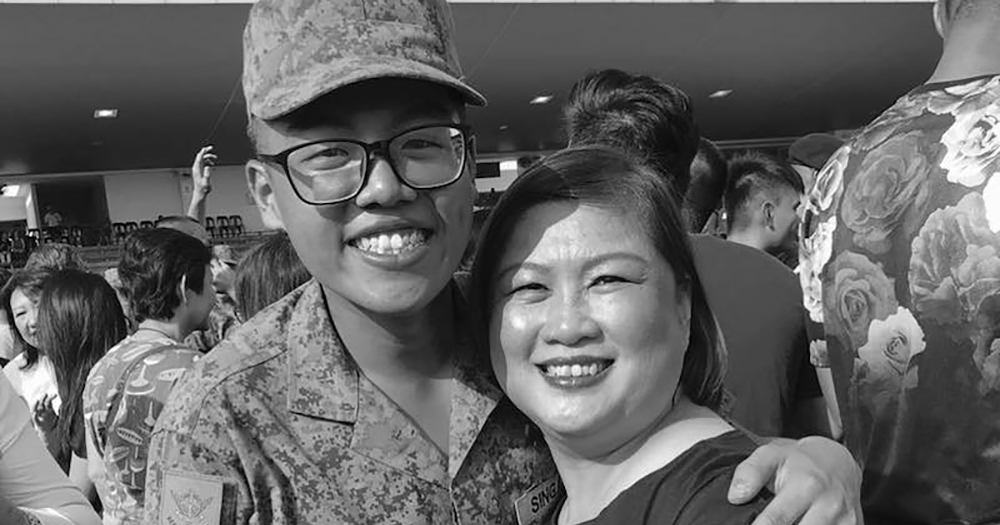An independent Committee of Inquiry (COI) convened by the Singapore Armed Forces (SAF) has established that there were lapses in training safety and inadequate casualty management which could have contributed to the death of full time national serviceman (NSF) CFC Dave Lee Han Xuan.
The preliminary findings from the COI were delivered by Defence Minister Ng Eng Hen in a ministerial statement in Parliament on August 6.
Lee collapsed from heat stroke after completing an 8km fast march on April 18, 2018. He was hospitalised at Changi General Hospital during which his condition deteriorated. Lee passed away on April 30 from multiple organ injury as a result of the heat stroke.
Ng, in his statement, said the COI's purpose was to "determine facts related to the incident and to identify causation, lapses and systemic problems".
As a result, the COI report did not identify individuals, if any, who were responsible for Lee's death. That is being established by a separate police investigation.
The COI discovered that the training lapses which occurred on April 17 could have contributed to Lee's accumulated fatigue and may have contributed to his heatstroke
[related_story]
Training lapses that occured 0n April 17
On April 17 at 3.30pm, Lee was made to run six 400m-laps at a pace faster than his running ability, about 10 seconds faster for the first three laps, then at his normal pace for the last three laps.
The rest time in between laps was also shorter than stipulated in the lesson plan by about 45 seconds. These deviations were not approved by the Commanding Officer (CO).
On the night of April 17, at about 9.45pm, Lee's platoon underwent an unauthorised informal collective punishment for "perceived lack of teamwork and use of mobile phones after Lights Out".
The entire punishment consisting of "Bear Crawls, Sprints, Leopard Crawls, as well as Push-Ups and Crunches" lasted for up to 30 - 35 minutes. The platoon was eventually sent back to wash up and sleep at 10.25pm.
This interrupted the seven hours of uninterrupted rest that all soldiers are required to take before physical exertion; Lee's platoon had 6 hours 15 minutes. According to Ng, "less sleep could be one of the factors which caused CFC Lee to have more fatigue" which could have contributed to his heat stroke.
Lee was "his usual self" before fast march
In his statement, Ng mentioned that save for the decreased amount of rest, all heat injury prevention measures as stipulated in the Training Safety Regulations (TSR) were adhered to.
This included a temperature-taking regime, hydration regime, ensuring adequate water supply, and adhering to a work-rest cycle.
Prior to the fast march, Lee's temperature was normal (36.3 degree celcius) and his buddy observed him to be "looking well and seemed to be his usual self".
However, after completing 6km of the fast march, Lee sounded off to his commander that he had cramps in his calf muscles. According to Ng, Lee's commanders "advised him to stretch his calf muscles...and encouraged him to complete the march".
Lee was the last one to complete the 8km fast march and as he was walking back to company line, he appeared to be disoriented and was immediately attended to by commanders and cover medics.
Inadequate casualty management on April 18
According to COI findings, Lee's collapse on April 18 was initially incorrectly assessed to be physical exhaustion. The treatment administered was also inadequate.
When Lee's condition did not improve, he was evacuated to Bedok Camp Medical Centre where he was administered two fast IV drips and underwent two cycles in the Body Cooling Unit.
However, Ng added that there was a "significant gap between the onset of symptoms and [Lee's] arrival at the medical centre". According to protocol, full body cooling should have been instituted as soon as heat stroke symptoms are presented and not longer than 30 minutes.
Lee was subsequently evacuated to Changi General Hospital when he did not respond to the treatment.
The COI noted it was unable to determine the exact cause of the heatstroke but noted that contributory causes of Lee's heatstroke include "accumulated fatigue, insufficient rest, Lee’s less than optimal state of health and his potential use of medication".
The COI assessed the likely reasons for Lee succumbing to heat stroke were "inadequate on-site casualty management and delayed evacuation"
Recommendations by External Panel
Separately, SAF commissioned an External Review Panel on Heat Injury Management (ERPHIM) to examine the SAF's heat injury policies and processes.
The panel found that the SAF's heat injury processes are generally sound and "aligned with prevalent industry and foreign military practices".
However, the panel also found that there is scope for improvement. It raised several recommendations which would ensure earlier recognition of heat injury and provide faster cooling of the body. Mindef would be adopting changes raised by ERPHIM, including ensuring personnel will be taught to better recognise heat injury sypmtoms and to "treat first, ask later."
Relevant personnel removed from command; responsible persons will be punished
Ng further explained that police investigations are still ongoing and a Coroner's Inquiry may be held. Therefore, the SAF can only release general facts and preliminary findings from the COI to avoid prejudicing the investigations.
He added that the COI findings will be reviewed should the police investigation uncover new facts.
In the meantime, the relevant persons in the incident have been removed from command, pending the investigation.
Ng said that Mindef will "wait for the Attorney-General’s Chambers’ decision whether to prosecute any person in the criminal courts. If no criminal charges are filed, MINDEF will prosecute persons responsible for lapses in this incident in our military court."
More stories about the Dave Lee case:
Top image via Facebook.
If you like what you read, follow us on Facebook, Instagram, Twitter and Telegram to get the latest updates.
